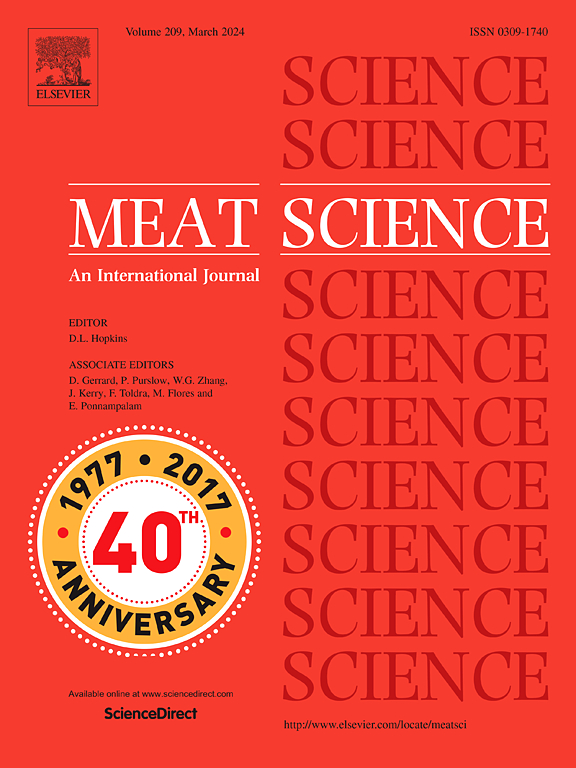Application of machine learning for optimizing biomarker combinations and guiding decisions on meat authentication
IF 6.1
1区 农林科学
Q1 Agricultural and Biological Sciences
引用次数: 0
Abstract
This paper tested the relevance of two machine learning approaches (decision trees, DTs; and random forest models, RFs) applied to meat authentication. DT allow to select and rank potential biomarkers according to their respective discriminatory power, optimize their combinations, and guide decisions on classification of samples according to their production systems, all of which has so far been under-researched. RFs were also developed as they are particularly robust. We applied both methods on 19 compounds/variables measured on different tissues (perirenal fat (PF), dorsal fat (DF) and longissimus thoracis et lumborum (LTL) muscle) in an experiment using Romane male lambs pasture-finished on lucerne for four durations pre-slaughter (n = 34–36 lambs per group). Several DTs/RFs were constructed including measurements that are relatively easy to carry out in the abattoir/point of sale, or measurements requiring laboratory analyses. The DTs/RFs distinguished carcasses of lambs pasture-finished from stall-fed lambs with an accuracy of up to 95.1–95.7 %, and showed that PF skatole and PF carotenoid pigment content (out of 19 variables) played a prominent role in classification. The DT/RF designed for use at the point of sale, which was based on DF spectrocolorimetric characteristics and LTL muscle colour coordinates, achieved 84.3–85.4 % accuracy. This is the first research to use DTs for meat authentication, and threshold values for classification decisions will probably need to be validated further on larger databases. These findings nevertheless raise prospects for broad application of decision trees for authentication.
机器学习在优化生物标志物组合和指导肉类认证决策中的应用
本文测试了两种机器学习方法(决策树,dt;随机森林模型(RFs)应用于肉类认证。DT允许根据其各自的区分能力选择和排序潜在的生物标志物,优化其组合,并根据其生产系统指导样品分类决策,所有这些都是迄今为止研究不足的。RFs的开发还因为它们特别健壮。在屠宰前4个持续期(每组34-36只羊),我们使用这两种方法对不同组织(肾周脂肪(PF)、背侧脂肪(DF)和胸腰最长肌(LTL)肌肉)的19种化合物/变量进行了测量。构建了几个dt / rf,包括相对容易在屠宰场/销售点进行的测量,或需要实验室分析的测量。DTs/RFs区分放牧羔羊和圈养羔羊的准确率高达95.1 - 95.7%,表明PF粪素和PF类胡萝卜素含量(19个变量中)在分类中起着重要作用。DT/RF设计用于销售点,它基于DF光谱比色特性和LTL肌肉颜色坐标,达到84.3 - 85.4%的准确度。这是第一个使用DTs进行肉类认证的研究,分类决策的阈值可能需要在更大的数据库上进一步验证。然而,这些发现为决策树在认证中的广泛应用提出了前景。
本文章由计算机程序翻译,如有差异,请以英文原文为准。
求助全文
约1分钟内获得全文
求助全文
来源期刊

Meat Science
工程技术-食品科技
CiteScore
12.60
自引率
9.90%
发文量
282
审稿时长
60 days
期刊介绍:
The aim of Meat Science is to serve as a suitable platform for the dissemination of interdisciplinary and international knowledge on all factors influencing the properties of meat. While the journal primarily focuses on the flesh of mammals, contributions related to poultry will be considered if they enhance the overall understanding of the relationship between muscle nature and meat quality post mortem. Additionally, papers on large birds (e.g., emus, ostriches) as well as wild-captured mammals and crocodiles will be welcomed.
 求助内容:
求助内容: 应助结果提醒方式:
应助结果提醒方式:


